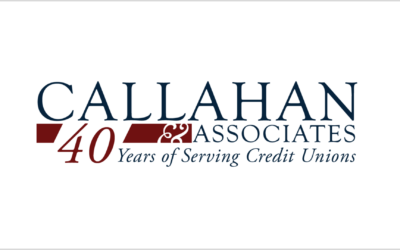However, any flaws in the benchmarking process can lead to inaccurate perceptions of your credit union’s performance. That’s why you’ll want to avoid these five common pitfalls that can lead to errors in your analysis.
- Imprecise Peer Groups
Peer groups based solely on asset size or geographic proximity don’t account for the wide range of other factors that can impact performance. Adding measures like field of membership, charter type, and operational metrics as criteria creates more accurate peer groups by narrowing your peers to only those that are most similar to your credit union. - Benchmarking Infrequently
The credit union industry is dynamic. Therefore, annual benchmarking can mask performance lags and prevent your institution from making timely operational changes. Whether it’s pricing strategies, interest rates, or housing market prices, the definition of credit union success is continuously changing, making it imperative to benchmark at least quarterly. - Limiting Potential Peers
If banks are competing in the same market, they should be part of your benchmarking analysis. While differences in the NCUA and FDIC reporting formats are an obstacle, tools like Callahan’s Peer-to-Peer make it possible. Instead of market-to-market comparisons, which may not be useful due to operational and business model differences, consider using bank peers when looking at market share, setting market-based growth goals, and identifying market trends. - Not Excluding Your Institution from Peer Groups
Including your own institution in peer groups can skew your benchmarks, preventing you from getting a true representation of your peers and the competitive landscape. The metrics you are measuring may change directionally without your institution in the mix, depending on economic factors and individual credit union performance. - Assuming Average is Excellent
Using peer averages may give insight as to how the group is performing directionally but should not be used as a measurement of excellence. The average will hide outliers both under and outperforming the peer group. Peer group averages can be used to set a baseline, but generally should not be used as a goal unless using an aspirational peer group consisting of high-performing credit unions.
Callahan can help you avoid these pitfalls.
More than 600 credit unions across the county and asset-sizes rely on Callahan’s data and analytics programs Peer-to-Peer, CUAnalyzer, MortgageAnalyzer, and BranchAnalyzer to accurately measure and track their credit union’s performance versus other credit union peers and banking competitors.
Callahan clients can access their benchmarking tools on their client portal.
Not a client? Learn how to optimize your benchmarking to make better informed strategic decisions.
More Blogs
Accessible Financial Services Matter More Than Ever
For millions of Americans, accessible financial services remain out of reach. In St. Louis, MO, Alltru FCU is changing that.
How To Use Credit Union Marketing Personas To Deepen Relationships
Rich knowledge of member behavior helps Solarity Credit Union segment its membership, create useful credit union marketing personas, and focus on deepening engagement.
How To Benchmark Credit Union Performance Against The Economy
Credit union executives and finance leaders face an increasingly complex task: explaining financial performance in a way that is both accurate and actionable. Traditional benchmarking approaches focus on two perspectives: Internal Trends – How your own institution’s...
Why Who You Benchmark Performance Against Matters More Than You Think
Too often, benchmarking is treated as a scorecard — a way to check performance against peers for board prep, audits, or strategic planning discussions. But the choice of peer group matters, it can help you tell a more complete story about your credit union’s performance and validate strategic decisions.
Why “Jobs To Be Done” Should Be At The Core Of Every Credit Union’s Strategy
Over the past decade, Callahan & Associates has worked closely with credit union leadership teams across the country to help them approach innovation and think more strategically about how they serve their members. A key part of this work has been rooted in...
Great Lakes Credit Union Featured In Callahan & Associates’ “Anatomy Of A Credit Union”
Washington, DC – Great Lakes Credit Union (GLCU) has been featured in the Spring 2025 edition of Callahan & Associates’ “Anatomy Of A Credit Union” series, which highlights exemplary credit unions demonstrating strategic innovation and community impact. The...
Callahan & Associates Celebrates 40 Years Of Credit Union Impact
Washington, DC – On April 1st, 2025, Callahan & Associates proudly marks its 40th anniversary, celebrating four decades of innovation, leadership, and commitment to serving the credit union industry. Since its founding in 1985, Callahan has been at the forefront...
Expertise Matters. Be The Partner Clients Trust.
For credit union suppliers to be considered indispensable, it’s more important than ever to know their clients' and prospects' businesses inside and out. Credit unions are looking for more than just basic products and services from their suppliers – they need partners...
Understanding Credit Union Financial Reports
The ability to understand a credit union’s financial performance is one of the most vital skills for industry suppliers and service organizations. Armed with this knowledge and having a basic understanding of a credit union’s financial reports can help sales and...
Navigating The NCUA’s 2024 Supervisory Priorities
In today's changing financial landscape, credit unions face a host of challenges when it comes to maintaining stability and ensuring member protection. Recently, the National Credit Union Administration (NCUA) outlined its supervisory priorities for 2024, highlighting...











